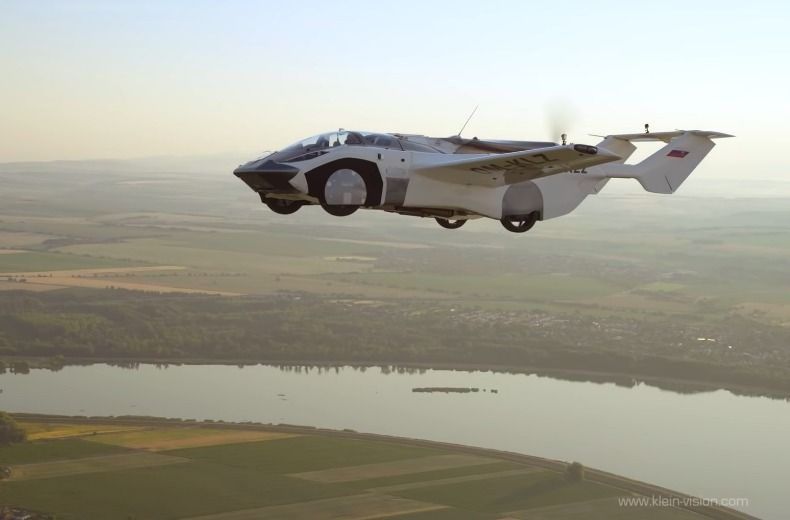AirCar by Slovakia-based company Klein Vision ‘turned science fiction into a reality’ when it took to the skies for 35 minutes on Monday before re-joining commuter traffic.
The flight between airports in Nitra and Bratislava went without a hitch thanks to the AirCar’s 1060bhp BMW engine, rear propellor and wings that fold away in 2 minutes and 15 seconds.
Powered by fuel from a regular petrol station, and with enough room for two, the airborne automobile flew at 8,200 ft with a cruising speed of 118mph.
The pre-production model is said to travel even faster at speeds of up to 186mph covering distances of just over 600 miles.
After landing the 200kg vehicle on the runway, AirCar inventor Professor Stefan Klein described the experience as “normal” and very pleasant”.
He said: “This flight starts a new era of dual-transportation vehicles. It opens a new category of transportation and returns the freedom originally attributed to cars back to the individual.”
Anton Zajac, co-founder of Klein Vision, added: “AirCar is no longer just a proof of concept… it has turned science fiction into a reality.”
It’s taken two years and just under €2m (£1.7m) to develop the concept vehicle and the team behind AirCar hope to tap into a sector predicted to be worth $1.5trillion (£1tn) by 2040.1
Mr Zajac said: "There are about 40,000 orders of aircraft in the United States alone... if we convert 5% of those, to change the aircraft for the flying car – we have a huge market."
- Hydrogen cars: are they the future?
- 2030 ban – is it worth buying an electric car now?
- Driverless cars: a guide to current and future tech
Optimism for flying cars appears to be at an all-time high (no pun intended), as Michael Cole, the chief executive of European operations at Hyundai, predicted the vehicles will be in our cities “by the latter part of this decade.”
The transport expert believes that “urban air mobility will offer great opportunity to free up congestion in cities, to help with emissions, whether that’s intra-city mobility in the air or whether it’s even between cities.”
While experts are excited by the prospect of flying cars, Dr Stephen Wright, senior research fellow in avionics and aircraft at the University of the West of England, remains cautious.
Dr Wright said: "Anyone can make an aeroplane but the trick is making one that flies and flies and flies for the thick end of a million hours, with a person on board, without having an incident.”
Describing the AirCar as "the lovechild of a Bugatti Veyron and a Cessna 172", he added: “I have to admit that this looks really cool... I can't wait to see the piece of paper that says this is safe to fly and safe to sell."
They're certainly getting more convincing, but this still begs the question: are flying cars actually realistic? Let us know what you think in the comments below.

Breakdown cover from £5.29 a month for Standard cover*
• Cheaper than AA Price Promise or we’ll beat it by 20%^
• We get to most breakdowns in 60 mins or less
• Our patrols fix 4/5 breakdowns on the spot











